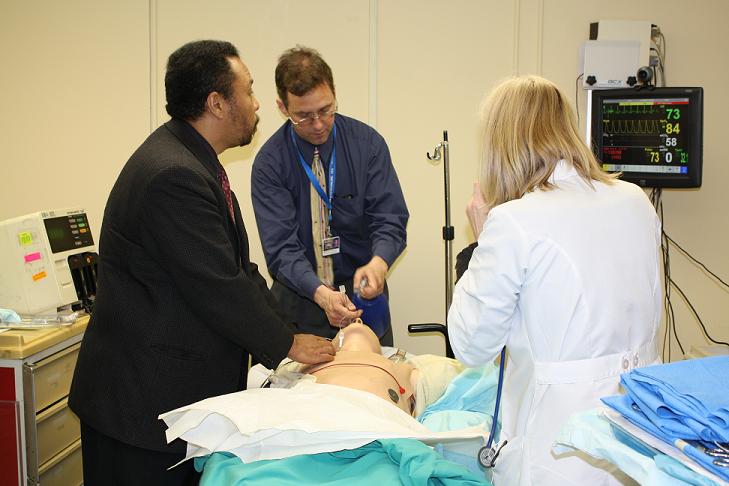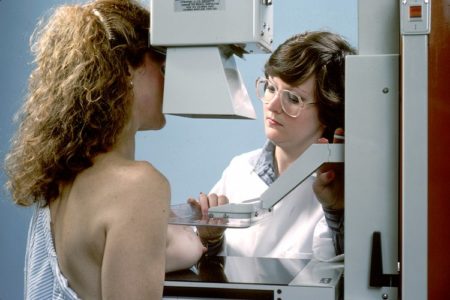The doctors fear they are losing the patient, who continues to gasp for breath, his pulse growing increasingly faint.

Over the sounds of beeps and sirens, which only serve to heighten the palpable tension in the room, and a monitor that shows the patient flatlining, the leader exhorts his team on, ordering a female doctor to clear the airway and begin intubating the patient, while he plunges a syringe into the man’s right arm. Time appears to be fading and what they do in the next few minutes will seemingly make the difference between life and death.
Or will it? Breaking the mood is what the residents call the “voice of God,” which emanates from above. The voice, in fact, is that of Robert Scott Bostwick, a former flight paramedic who sits in the control room, and is signaling an end to the exercise and a beginning to the debriefing.
The team, comprised of first-and second-year surgical and medical residents at St. Barnabas Hospital, has been practicing in one of the hospital’s simulated learning rooms. Resembling a hospital ER, the room features a mannequin that speaks, breathes, moans, has a pulse, gives blood, makes bodily sounds, and can have most medical procedures imposed on it (and can even be made gender specific). Two cameras record every second of the drama that enfolds, with a debriefing by Dr. Robert Davis, the hospital’s Director of Trauma soon to follow.
Called the St. Barnabas Center of Excellence/Institute for Clinical Competence, the program is an informal alliance between the Bronx hospital and the New York College of Osteopathic Medicine (NYCOM) located in Old Westbury on Long Island, and is the only one of its kind in New York City. In addition to working on mannequins, doctors, residents and other students also interact with professional actors in both scripted and improvisational scenarios.
“The simulation lab is intended to work on their team building and technical skills, to enhance their judgment, teach them cultural competency, and, most of all, improve patient safety,” said Lynn Kemp, a nurse and Assistant Vice President – Surgical Services at the hospital, who as Project Leader was responsible for starting the program in 2007. “Our intention is to teach them in the lab and to reinforce it so they don’t make the same mistakes when it counts.”
Supporting Kemp and Bostwick in the lab are a production expert, Cecily Storm, and a former clinical psychologist, Dr. Anthony Errichetti. They create various scenarios for doctors specializing not only in trauma, but also in pediatrics, internal medicine and family medicine. One exercise focuses on bringing bad news to a patient (e.g. to a mother after her son has died from a gunshot wound), and another deals with a patient and her family who speak little English.
The staff and faculty at the hospital play back the digital recordings and have the residents view them. In those scenes that involve actors, the “patients” themselves also debrief the residents providing them with a “patient’s point of view.”
“It is not such a problem if the student makes a mistake, after all they’re there to learn from them,” said Dr. Errichetti. “The problem is when they lack self-awareness, when they think they were great and the patient thinks they were terrible.”
Although a resident can easily be made to feel as though he or she is sitting in the front of the classroom wearing a dunce cap, that’s not the intention of the program.
“We never want them to leave here feeling they failed,” said Bostwick, who is employed by NYCOM. “We always want them to leave with a positive experience.”
Many of the residents squirm when they view themselves. Demonstrating improvement from one session to the next, however, is key to the learning process.
“We often get voluntary requests from doctors who want to come in and practice,” said Kemp. “It can be painful, but they know it helps when applied to real life situations. We’re often told they were happy for the experience because it reduced their anxiety when performing in actual situations.
“Our job is to bring the learner to the edge of their comfort level. We don’t want to go too far, but, yes, we do want to see them sweat a little.”








